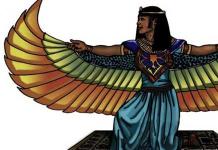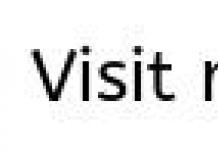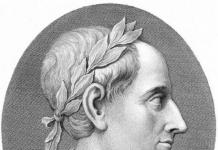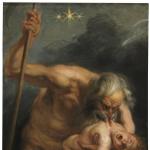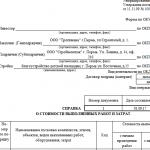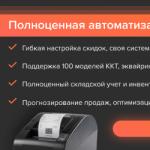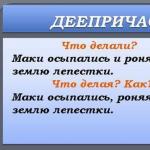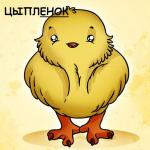1. Prepare a table in your notebook to record the results of measurements and calculations:
|
I , A |
I Wed , A |
m, kg |
t, With |
e, Cl |
|
I 1 = ; I 2 = ; I 3 = ; I 4 = ; I 5 = ; I 6 = ; I 7 = ; I 8 = ; I 9 = ; I 10 = ; I 11 = ; I 12 = ; I 13 = ; I 14 =; I 15 = ; |
Measure the mass m 1 of the electrode, which will subsequently be connected to the negative pole of the power source.
Assemble an electrical circuit. The electrodes are connected to the circuit by inserting their bent petals into the slots of the connecting wire plugs.
Check that the chain is assembled correctly and the connecting leads are securely fastened.
Connect the power source to the mains and fill the cuvette with copper sulfate solution.
Close the key and at the same time start counting the time. Record the first reading of ammeter I 1
For 15-20 minutes, at one-minute intervals, measure and record the current in the circuit.
After 15-20 minutes from the moment the key is closed, open it, turn off the power source and disassemble the circuit.
Rinse and dry the cathode.
Calculate the average current value I avg.
Measure the mass of the cathode T 2 .
Calculate the mass of copper deposited on the cathode: m = m 1 – m 2.
Determine the value of the electron charge using formula (1).
Observation of the effect of a magnetic field on a current
Goal of the work: experimentally determine the dependence of the action of a magnetic field on a conductor with current on the strength and direction of the current in it.
Equipment: power supply, spool, variable resistor, key, strip magnet, tripod with coupling and claw, connecting wires.
The work examines the interaction of a coil of wire suspended on a tripod with a permanent magnet also mounted on this tripod next to the coil. A variable resistance is connected in series with the coil, which allows you to change the current strength in it during the experiment. The electrical diagram of the installation is shown in Figure 1.
Progress.
By changing the connection of the connecting leads to the power source, establish how the effect of the magnetic field on the coil depends on the direction of the current in it.
Reverse the position of the magnet poles and repeat the steps indicated in steps 3, 4 and 5.
For each stage of the experiment, make schematic drawings reflecting changes in the interaction of the magnet and coil when changing operating modes of the installation.
Indicate in the drawings the directions of the magnetic field of the magnet, the current in the coil, and the magnetic field of the coil.
Explain the results of your observations.
Laboratory work No. 1
Observation of the effect of a magnetic field on a current
Goal of the work: make sure that a uniform magnetic field has an orienting effect on the current-carrying frame.
Equipment: reel-spool, tripod, direct current source, rheostat, key, connecting wires, arc-shaped or strip magnet.
Note. Before work, make sure that the rheostat motor is set to maximum resistance.
In 1820, H. Oersted discovered the effect of electric current on _____ In 1820, A. Ampere established that two parallel conductors with current _____ A magnetic field can be created: a) _____ b) _____ c) _____ What is the main characteristic of a magnetic field ? In what SI units is it measured? The direction of the magnetic induction vector B in the place where the frame with current is located is taken to be _____ What is the peculiarity of magnetic induction lines? The gimlet rule allows _____ The Ampere force formula is: F= _____ Formulate the left-hand rule. The maximum rotating torque M acting on the current-carrying frame from the magnetic field depends on _____
Progress
Assemble the circuit according to the drawing, hanging it on flexible wires
reel-skein.
Place the arc-shaped magnet under some sharp
angle α (for example 45°) to the plane of the spool-spool and, closing the key, observe the movement of the spool-spool.
Repeat the experiment, first changing the poles of the magnet and then the direction of the electric current. Draw a coil and a magnet, indicating the direction of the magnetic field, the direction of the electric current and the nature of the movement of the coil. Explain the behavior of a coil with current in a uniform magnetic field. Place the arc-shaped magnet in the plane of the coil-coil (α=0°). Repeat the steps indicated in steps 2-5. Place the arc-shaped magnet perpendicular to the plane of the coil-spool (α=90°). Repeat the steps indicated in steps 2-5.
Conclusion: _____
Additional task
By changing the current strength with a rheostat, observe whether the nature of the movement of the coil with current in a magnetic field changes?
Laboratory work No. 2
Study of the phenomenon of electromagnetic induction
Goal of the work: study the phenomenon of electromagnetic induction, check Lenz's rule.
Equipment: milliammeter, power source, coils with cores, arc-shaped or strip magnet, rheostat, key, connecting wires, magnetic needle.
Practice tasks and questions
August 28, 1831 M. Faraday _____ What is the phenomenon of electromagnetic induction? Magnetic flux Ф through a surface of area S is called _____ In what SI units are they measured?a) magnetic field induction [B]= _____
b) magnetic flux [F]= _____
5. Lenz’s rule allows us to determine _____
6. Write down the formula for the law of electromagnetic induction.
7. What is the physical meaning of the law of electromagnetic induction?
8. Why is the discovery of the phenomenon of electromagnetic induction considered one of the greatest discoveries in the field of physics?
Progress
Connect the coil to the milliammeter terminals. Follow these steps:
a) insert the north (N) pole of the magnet into the coil;
b) stop the magnet for a few seconds;
c) remove the magnet from the coil (the speed module of the magnet is approximately the same).
3. Write down whether an induced current arose in the coil and what its features were in each case: a) _____ b) _____ c) _____
4. Repeat steps 2 with the south (S) pole of the magnet and draw the appropriate conclusions: a) _____ b) _____ c) _____
5. Formulate under what condition an induced current appeared in the coil.
6. Explain the difference in the direction of the induced current in terms of Lenz’s rule
7. Draw a diagram of the experiment.
8. Draw a circuit consisting of a current source, two coils on a common core, a switch, a rheostat and a milliammeter (connect the first coil to a milliammeter, connect the second coil through a rheostat to the current source).
9. Assemble an electrical circuit according to this diagram.
10. By closing and opening the key, check whether an induction current occurs in the first coil.
11. Check the Lenz rule.
12. Check whether induced current occurs when the rheostat current changes.
Laboratory work No. 3
Determining the acceleration of free fall using a pendulum
Goal of the work: calculate the acceleration of gravity and evaluate the accuracy of the result obtained.
Equipment: a clock with a second hand, a measuring tape, a ball with a hole, a thread, a tripod with a sleeve and a ring.
Practice tasks and questions
Free oscillations are called _____ Under what conditions can a string pendulum be considered mathematical? The period of oscillation is _____ In what SI units are measured:
a) period [T]= _____
b) frequency [ν]= _____
c) cyclic frequency[ω]= _____
d) oscillation phase[ϕ]= _____
5. Write down the formula for the period of oscillation of a mathematical pendulum obtained by G. Huygens.
6. Write down the equation of oscillatory motion in differential form and its solution.
7. The cyclic frequency of oscillations of the pendulum is 2.5π rad/s. Find the period and frequency of the pendulum's oscillations.
8. The equation of motion of a pendulum has the form x=0.08 sin 0.4πt. Determine the amplitude, period and frequency of oscillations.
Progress
Place a tripod on the edge of the table, secure a ring at its upper end using a coupling and hang a ball from it on a thread. The ball should hang at a distance of 2-5 cm from the floor. Measure the length of the pendulum with a tape: ℓ= _____ Deflect the pendulum from the equilibrium position by 5-8 cm and release it. Measure the time of 30-50 complete oscillations (for example N=40). t₁ = _____ Repeat the experiment 4 more times (the number of oscillations is the same in all experiments).
t= _____ thttps://pandia.ru/text/78/010/images/image004_143.gif" width="11" height="23">.gif" width="140" height="41">,
t ![]() thttps://pandia.ru/text/78/010/images/image009_84.gif" width="65" height="44">
thttps://pandia.ru/text/78/010/images/image009_84.gif" width="65" height="44"> ![]() ________ .
________ .
Enter the results of calculations and measurements into the table.
q ![]() q__________
q__________
Calculate the absolute errors in measuring time in each experiment.
∆t₁=|t₁−thttps://pandia.ru/text/78/010/images/image012_63.gif" width="15" height="25 src=">|=| |=
∆t₃=|t₃−thttps://pandia.ru/text/78/010/images/image012_63.gif" width="15" height="25 src=">|=| |=
∆t₅=|t₅−thttps://pandia.ru/text/78/010/images/image012_63.gif" width="15" height="25"> = ![]()
![]() = _______
= _______
Calculate the relative measurement error q using the formula:
![]() , where = 0.75 cm
, where = 0.75 cm ![]()
Calculate the absolute measurement error q.
https://pandia.ru/text/78/010/images/image012_63.gif" width="15" height="25 ">± ∆q. q = _____ q = _____ Compare the result with the value of 9.8 m /s².
Laboratory work No. 4
Glass refractive index measurement
Goal of the work: Calculate the refractive index of glass relative to air.
Equipment: a glass plate shaped like a trapezoid, a current source, a key, a light bulb, connecting wires, a metal screen with a slot.
Practice tasks and questions
Refraction of light is a phenomenon _____ Why do fingers dipped into water appear short? Why does light pass from turpentine to glycerin without refraction? What is the physical meaning of the refractive index? What is the difference between relative refractive index and absolute refractive index? Write down the formula for the law of refraction of light. In what case is the angle of refraction equal to the angle of incidence? At what angle of incidence α is the reflected ray perpendicular to the refracted ray? (n is the relative refractive index of the two media)
Progress
Connect the light bulb through the switch to a power source. Using a screen with a slit, get a thin beam of light. Position the plate so that the light beam falls on it at point B at a certain acute angle. Place two points along the light beam incident on the plate and emerging from it. Turn off the light bulb and remove the plate, tracing its outline. Through point B of the air-glass interface, draw a perpendicular to the boundary, the incident and refracted rays and mark the angles of incidence α and refraction β. Draw a circle with the center at point B and mark the intersection points of the circle with the incident and reflected rays (points A and C, respectively). Measure the distance from point A to the perpendicular to the interface. α= ____ Measure the distance from point C to the perpendicular to the interface. b= _____ Calculate the refractive index of glass using the formula.
https://pandia.ru/text/78/010/images/image025_24.gif" width="67" height="44 src="> n= n= _____
Calculate the relative error of refractive index measurement using the formula:
Where ∆α = ∆b = 0.15 cm. ______ = _____
11. Calculate the absolute measurement error n.
∆n = n · εhttps://pandia.ru/text/78/010/images/image031_22.gif" width="16" height="24 src=">= n ± ∆n. n= _____
13. Enter the results of calculations and measurements into the table.
14. Repeat measurements and calculations at a different angle of incidence.
15. Compare the results of the glass refractive index with the table.
Additional task
Measure angles α and β with a protractor. Find sin α=_____, sin β= _____ from the table. Calculate the refractive index of glass n= n= _____ Evaluate the result.
Laboratory work No. 5
Determination of the optical power and focal length of a collecting lens.
Goal of the work: determine the focal length and optical power of a converging lens.
Equipment: ruler, two right triangles, long-focus converging lens, light bulb on a stand with a cap containing a letter, power source, key, connecting wires, screen, guide rail.
Practice tasks and questions
A lens is called _____ A thin lens is _____ Show the path of rays after refraction in a converging lens.


Write down the formula for a thin lens. The optical power of a lens is _____ D= ______ How will the focal length of the lens change if its temperature increases? Under what condition is the image of an object obtained using a converging lens virtual? The light source is placed at the double focus of a converging lens, the focal length of which is F = 2 m. At what distance from the lens is its image? Construct an image in a converging lens.


Describe the resulting image.
Progress
1 Assemble an electrical circuit by connecting a light bulb to a power source through a switch.
2. Place the light bulb on one edge of the table and the screen on the other edge. Place a converging lens between them.
3. Turn on the light bulb and move the lens along the rod until a sharp, reduced image of the glowing letter of the light bulb cap is obtained on the screen.
4. Measure the distance from the screen to the lens in mm. d=
5. Measure the distance from the lens to the image in mm. f
6. With d unchanged, repeat the experiment 2 more times, each time re-obtaining a sharp image. f ![]() ,f
,f ![]()
7. Calculate the average distance from the image to the lens.
fhttps://pandia.ru/text/78/010/images/image041_14.gif" width="117" height="41"> f= _______
8. Calculate the optical power of the lens D D
9. Calculate the focal length of the lens. F F=
Equipment: a diffraction grating with a period of mm or mm, a tripod, a ruler with a holder for the grating and a black screen with a slit in the middle, which can be moved along the ruler, .
Practice tasks and questions
Dispersion of light is called _____ Interference of light waves is _____ Formulate the Huygens-Fresnel principle. A diffraction grating is _____ Maximums at a diffraction grating arise under the condition _____ A monochromatic wave of light is normally incident on a diffraction grating with a period of d=2 µm. Determine the wavelength if k=4. Why are particles smaller than 0.3 microns not visible in an optical microscope? Does the position of the illumination maxima created by a diffraction grating depend on the number of slits? Calculate the difference in the path of monochromatic light waves (λ=6·10 m) incident on the diffraction grating and forming a second-order maximum.
Progress
Turn on the light source. Looking through the diffraction grating and the slit in the screen at the light source and moving the grating in the holder, install it so that the diffraction spectra are parallel to the screen scale. Place the screen approximately 50 cm from the grille. Measure the distance from the diffraction grating to the screen. α= _____ Measure the distance from the screen slit to the first-order red line to the left and right of the slit.
Left: b = _____ Right: b=_____
Calculate the wavelength of red light to the left of the slit in the screen.
Calculate the wavelength of red light to the right of the slit in the screen.
Calculate the average red wavelength.
https://pandia.ru/text/78/010/images/image058_7.gif" width="117" height="45 src=">0 " style="border-collapse:collapse;border:none">
Location
To the right of
violet
To the right of
Laboratory work No. 11. Observation of the phenomenon of interference and diffraction of light.
Purpose of the work: to experimentally study the phenomenon of interference and diffraction of light, to identify the conditions for the occurrence of these phenomena and the nature of the distribution of light energy in space..
Equipment: electric lamp with a straight filament (one per class), two glass plates, a PVC tube, a glass with a soap solution, a wire ring with a handle with a diameter of 30 mm, a blade, a strip of paper ½ sheet, nylon fabric 5x5cm, a diffraction grating, light filters .
Brief theory
Interference and diffraction are phenomena characteristic of waves of any nature: mechanical, electromagnetic. Wave interference is the addition of two (or several) waves in space, in which the resulting wave is strengthened or weakened at different points. Interference is observed when waves emitted by the same light source superimpose and arrive at a given point in different ways. To form a stable interference pattern, coherent waves are needed - waves that have the same frequency and a constant phase difference. Coherent waves can be obtained on thin films of oxides, fat, or on an air wedge-gap between two transparent glasses pressed against each other.
The amplitude of the resulting displacement at point C depends on the difference in the wave paths at a distance d2 – d1.
[Download the file to see the picture]Maximum condition (amplification of oscillations): the difference in the wave paths is equal to an even number of half-waves
where k=0; ± 1; ± 2; ± 3;
[Download the file to see the picture]Waves from sources A and B will arrive at point C in the same phases and “reinforce each other.
If the path difference is equal to an odd number of half-waves, then the waves will weaken each other and a minimum will be observed at the point of their meeting.
[Download the file to view the picture][Download the file to view the picture]
When light interferes, a spatial redistribution of the energy of light waves occurs.
Diffraction is the phenomenon of wave deviation from rectilinear propagation when passing through small holes and bending around small obstacles.
Diffraction is explained by the Huygens-Fresnel principle: each point of the obstacle that the light reaches becomes a source of secondary waves, coherent, which propagate beyond the edges of the obstacle and interfere with each other, forming a stable interference pattern - alternating maxima and minima of illumination, rainbow-colored in white light. Condition for the manifestation of diffraction: The dimensions of obstacles (holes) must be smaller or commensurate with the wavelength. Diffraction is observed on thin threads, scratches on glass, on a vertical slit in a sheet of paper, on eyelashes, on water droplets on foggy glass, on ice crystals in a cloud or on glass, on the chitinous bristles of insects, on bird feathers, on CDs, wrapping paper., on a diffraction grating.,
A diffraction grating is an optical device that is a periodic structure of a large number of regularly arranged elements on which light is diffraction. Strokes with a profile that is specific and constant for a given diffraction grating are repeated at the same interval d (grating period). The ability of a diffraction grating to separate a beam of light incident on it according to wavelengths is its main property. There are reflective and transparent diffraction gratings. Modern devices mainly use reflective diffraction gratings.
Progress:
Task 1. A) Observation of interference on a thin film:
Experiment 1. Dip the wire ring into the soap solution. A soap film is formed on the wire ring.
Place it vertically. We observe light and dark horizontal stripes that change in width and color as the thickness of the film changes. Look at the picture through a filter.
Write down how many stripes are observed and how the colors alternate in them?
Experiment 2. Using a PVC tube, blow out a soap bubble and examine it carefully. When illuminated with white light, observe the formation of interference spots colored in spectral colors. Examine the picture through a light filter.
What colors are visible in the bubble and how do they alternate from top to bottom?
B) Observation of interference on an air wedge:
Experiment 3. Carefully wipe two glass plates, place them together and squeeze with your fingers. Due to the non-ideal shape of the contacting surfaces, thin air voids are formed between the plates - these are air wedges, and interference occurs on them. When the force compressing the plates changes, the thickness of the air wedge changes, which leads to a change in the location and shape of the interference maxima and minima. Then examine the picture through a filter.
Sketch what you saw in white light and what you saw through a filter.
Draw a conclusion: Why interference occurs, how to explain the color of the maxima in the interference pattern, what affects the brightness and color of the pattern.
Task 2. Observation of light diffraction.
Experiment 4. Use a blade to cut a slit in a sheet of paper, apply the paper to your eyes and look through the slit at the light source-lamp. We observe the maximums and minimums of illumination. Then look at the picture through a filter.
Sketch the diffraction pattern seen in white light and in monochromatic light.
By deforming the paper we reduce the width of the slit and observe diffraction.
Experiment 5.Look at a light source-lamp through a diffraction grating.
How has the diffraction pattern changed?
Experiment 6. Look through the nylon fabric at the filament of the luminous lamp. By rotating the fabric around its axis, achieve a clear diffraction pattern in the form of two diffraction stripes crossed at right angles.
Sketch the observed diffraction cross. Explain this phenomenon.
Draw a conclusion: why diffraction occurs, how to explain the color of the maxima in the diffraction pattern, what affects the brightness and color of the pattern.
Control questions:
What is common between the phenomenon of interference and the phenomenon of diffraction?
What waves can produce a stable interference pattern?
Why is there no interference pattern on the student desk from the lamps suspended from the ceiling in the classroom?
6. How to explain the colored circles around the Moon?
Attached files
1. PURPOSE OF THE WORK. Observation of the effect of a magnetic field on a coil of current, on a straight conductor with current.
2. DEVICES AND ACCESSORIES. Wire coil, tripod, DC power source, key, bar magnet, arc magnet, straight conductor.
BRIEF THEORY
Let us list the main properties of the magnetic field that are to be observed experimentally, and the questions that a student must know when starting to perform this laboratory work.
1. A magnetic field acts on a current-carrying conductor.
2. - magnetic field induction, a vector physical quantity, is a force characteristic of a magnetic field.
3. The magnetic field can be represented graphically using lines of force. The tangent to the field line has a direction coinciding with the direction of the vector.
4. In Figure 1, using field lines, the magnetic fields of a strip magnet, a ring with current, a coil with current, and an arc-shaped magnet are depicted. N – north magnetic pole, S – south magnetic pole.
5. When magnetic field sources interact, like poles repel each other, unlike poles attract each other.
6. Force acting on a current-carrying wire in a magnetic field (Ampere’s law):
F a = IB l sina, (1)
Where I - force current in the conductor;B– magnetic field induction;l – conductor length; a is the angle between the conductor and the vector. Force vector direction F adetermined by the left-hand rule.

WORK TASK
Observation of the effect of the magnetic field of a strip magnet on a coil of current.
4.1.1. Hang the coil of wire on a tripod, connect the ends of the wire through a key to a power source.
4.1.2. Apply a strip magnet to the hanging skein and, closing the key, observe the movements of the skein.
4.1.3. Sketch the relative positions of the skein and the magnet.
4.1.4. Record the observation results in Table 1.
Table 1.
The effect of a magnetic field on a straight conductor carrying current.
4.2.1. Place a hanging conductor between the poles of an arc-shaped magnet.
4.2.2. Sketch the relative positions of the arc-shaped magnet and the straight conductor.
4.2.3. Close the key of the electrical circuit and observe the movement of the conductor.
4.2.4. Reverse the polarity of the current source connection (reverse current will flow through the conductor) and observe the movement of the conductor.
4.2.5. Record the observation results in Table 2.
Table 2.
CONCLUSION
In your conclusion, analyze the experimental results and answer the following questions.
1. Does a magnetic field act on a conductor with current or on a conductor without current?
2. Do the results of the assignment support 4.1 point 5 from section “ BRIEF THEORY»?
3. Do the results of the assignment support 4.2 point 6 from section “ BRIEF THEORY»?
CONTROL QUESTIONS
6.1. What does a magnetic field affect?
6.2. What physical quantity is the force characteristic of a magnetic field, how is it used?
6.3. What is a magnetic field line and what are field lines used for?
6.4. Draw the magnetic field of a bar magnet using lines of force. Indicate the north and south magnetic poles of the magnet.
6.5. How do like magnetic poles and unlike magnetic poles interact with each other?
6.6. How are the magnitude and direction of the force acting on a current-carrying wire in a magnetic field determined?
Equipment: tripod with coupling and claw, power supply, coil of wire, arc-shaped magnet, key, connecting wires.
Instructions for performing the work
1. Assemble the installation shown in Figure 144, b. Apply a magnet to the coil of wire and close the circuit. Pay attention to the nature of the magnetic interaction between the skein and the magnet.

2. Bring the magnet to the coil with the other pole. How has the nature of the interaction between the coil and the magnet changed?
3. Repeat the experiments, placing the magnet on the other side of the skein.
4. Place a coil of wire between the poles of the magnet as shown in Figure 144, a. Close the circuit and observe the phenomenon. Draw conclusions.

In work No. 4 we will consider the interaction of a solenoid with a magnet. As is known, a magnetic field arises in a solenoid under current, which will interact with a permanent magnet. We will conduct a series of four experiments with different positions of the coil and magnet. It should be expected that their interaction will also be different (attraction or repulsion).
Approximate progress of work:
We observe the following phenomena, which can be conveniently represented in the form of drawings:

